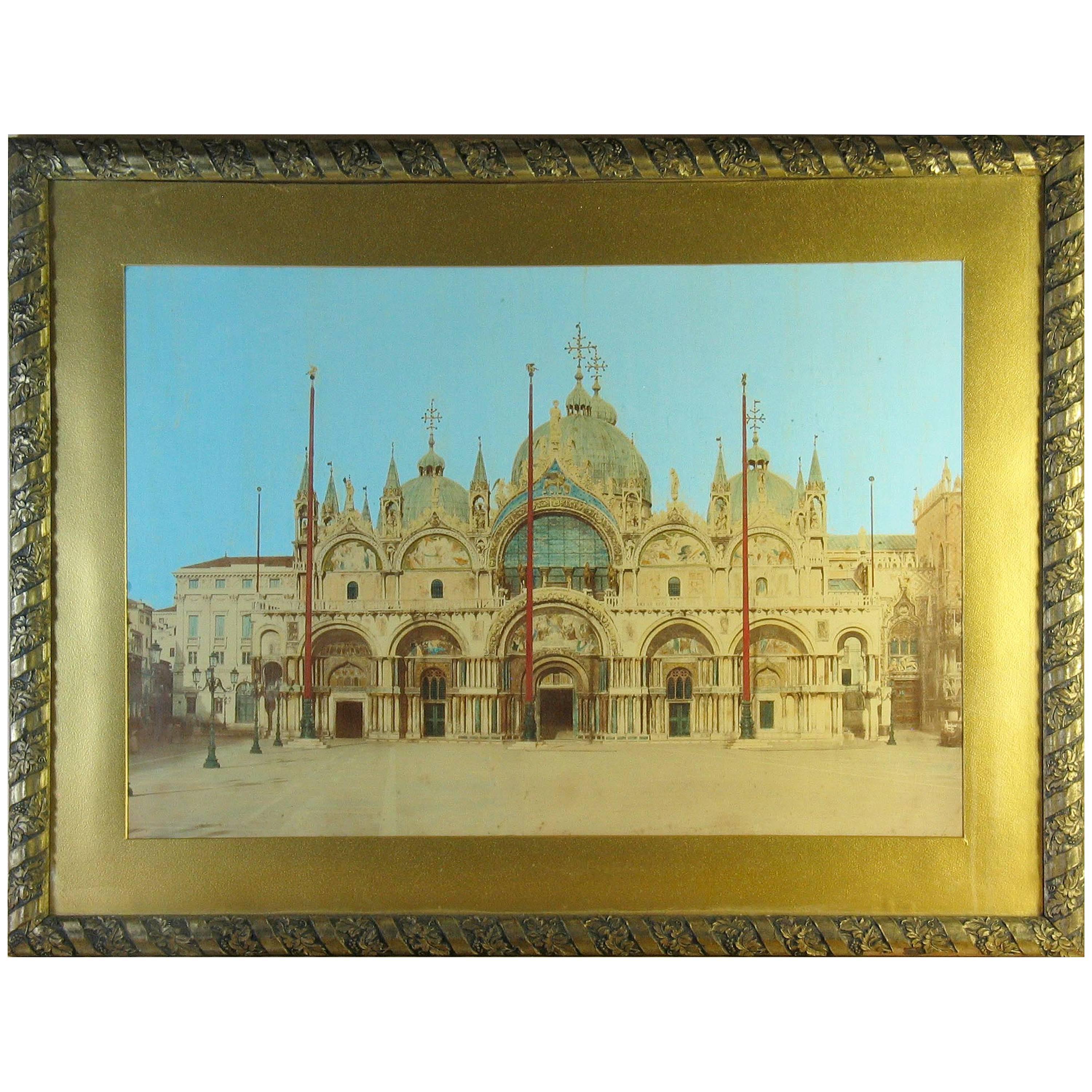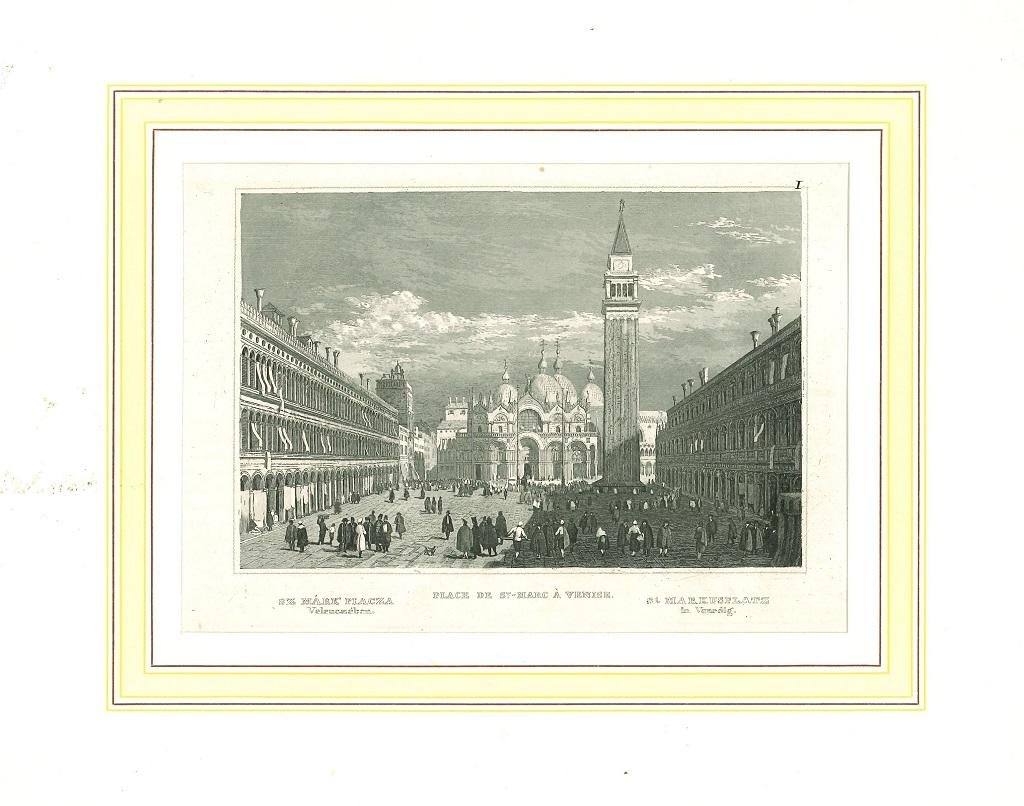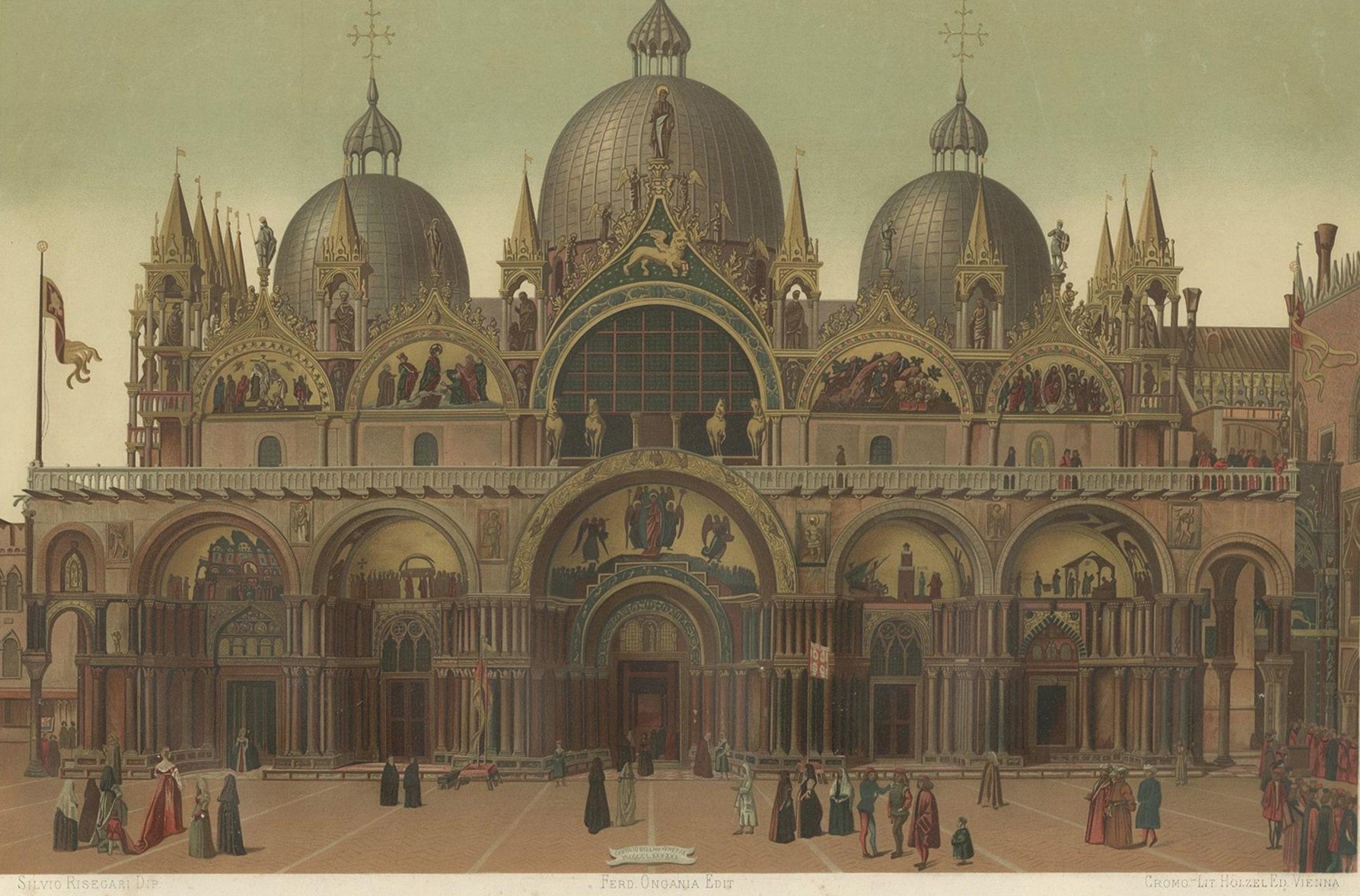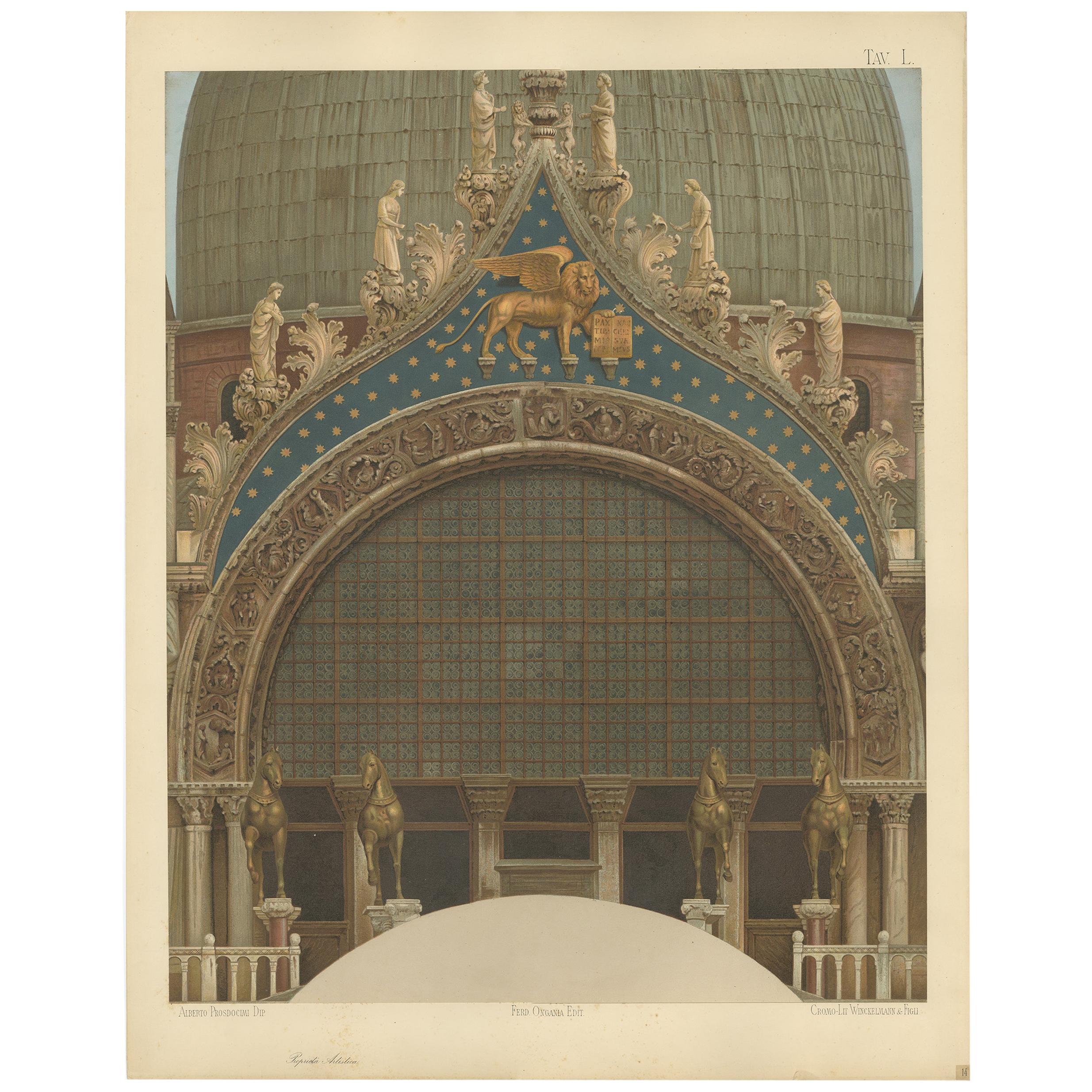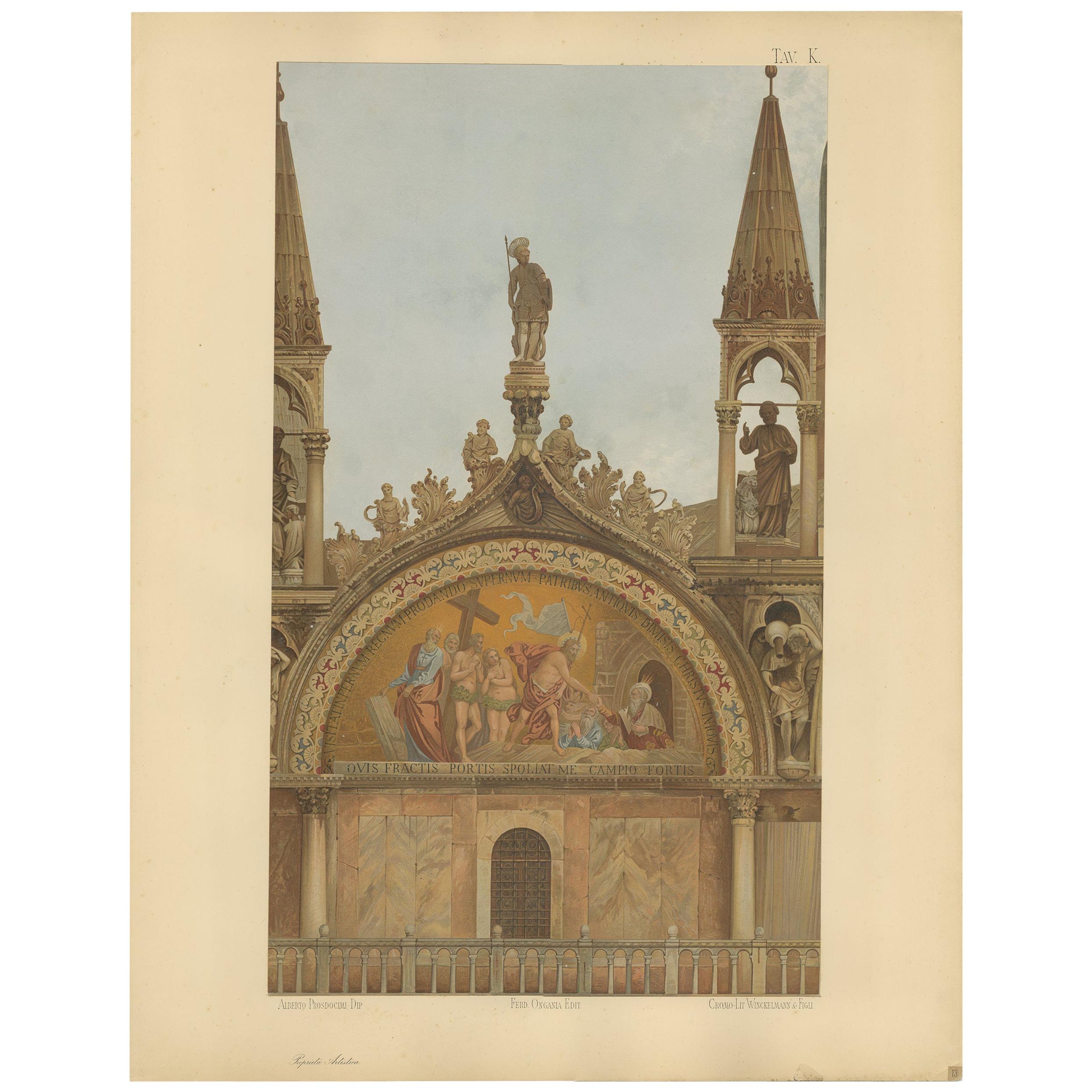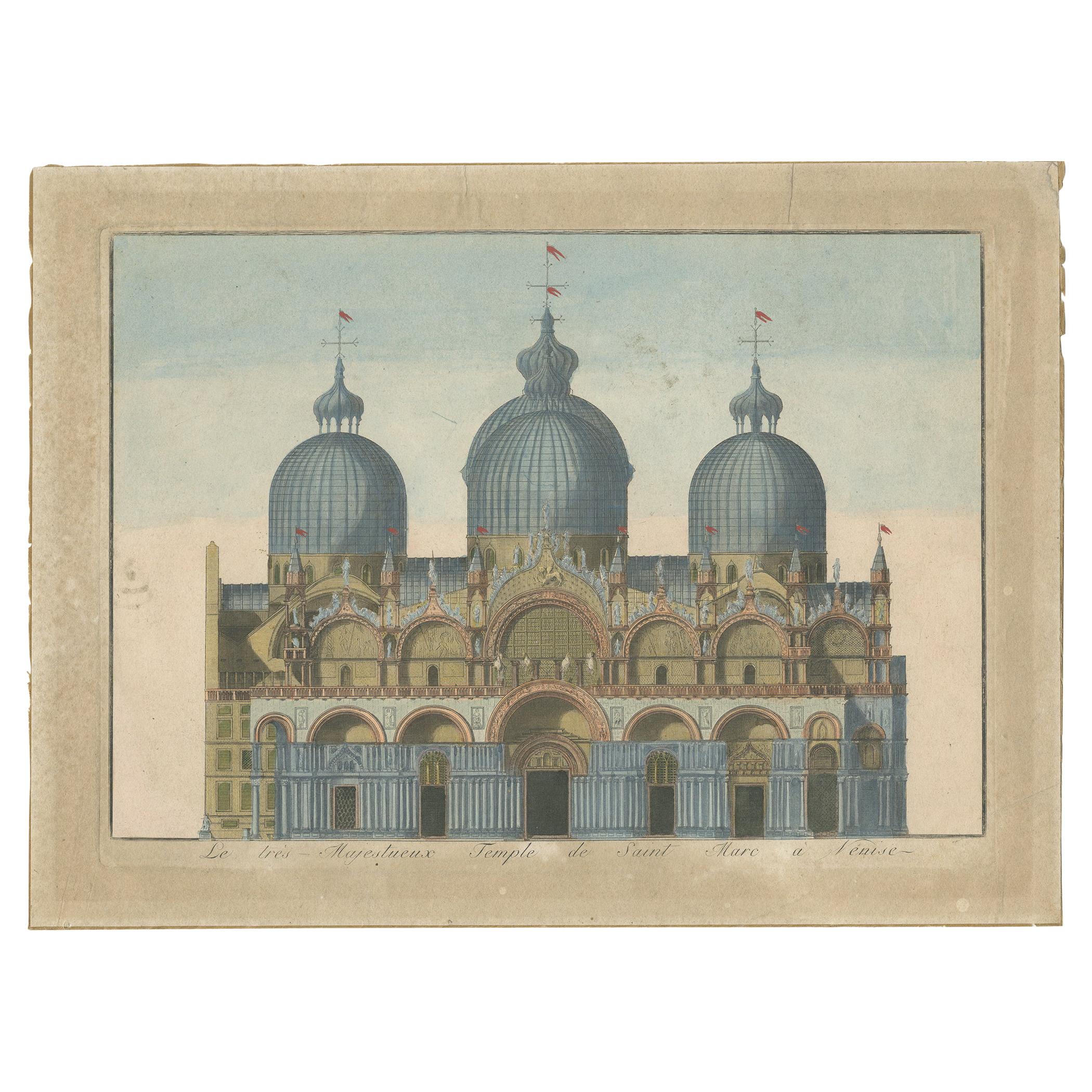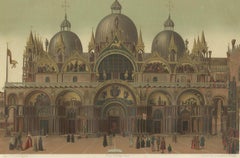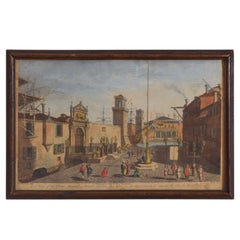Items Similar to Hand-Colored Photographs of Piazza San Marco & St Mark’s Basilica, Venice, 1870
Want more images or videos?
Request additional images or videos from the seller
1 of 6
Hand-Colored Photographs of Piazza San Marco & St Mark’s Basilica, Venice, 1870
$440.92
$551.1520% Off
£328.17
£410.2220% Off
€368
€46020% Off
CA$603.95
CA$754.9320% Off
A$671.72
A$839.6520% Off
CHF 350.75
CHF 438.4420% Off
MX$8,174.11
MX$10,217.6420% Off
NOK 4,479.63
NOK 5,599.5320% Off
SEK 4,201.10
SEK 5,251.3720% Off
DKK 2,801.46
DKK 3,501.8220% Off
Shipping
Retrieving quote...The 1stDibs Promise:
Authenticity Guarantee,
Money-Back Guarantee,
24-Hour Cancellation
About the Item
The two photographs are hand-colored images of Piazza San Marco in Venice, Italy, showcasing iconic Venetian architecture:
First Image:
- Subject: The broader view of Piazza San Marco, with the Campanile di San Marco (the tall bell tower) in the center. On the right is part of the Procuratie Vecchie (the long arcade), and in the background, you can see the domes of St. Mark’s Basilica.
Second Image:
- Subject: A detailed view of St. Mark’s Basilica from the front, highlighting its intricate Byzantine architecture, domes, mosaics, and facade. The tall flagpoles, which are typically found in front of the basilica, are also visible.
Location:
- Piazza San Marco (St. Mark’s Square) in Venice, Italy. This square is the heart of the city and home to some of Venice’s most iconic landmarks, including St. Mark’s Basilica and the Campanile.
Date and Artist:
- These photos are likely from the late 19th century, given the hand-coloring technique, which was popular during this period before color photography became widely available. The precise photographer or studio is unclear, but these types of images were often produced by well-known studios of the time, possibly Edizioni Brogi or similar Italian photographic publishers that produced souvenir images of famous landmarks for tourists.
Technique:
- Hand-colored photograph: These photos were originally black-and-white photographs that were meticulously hand-colored with pigments to enhance their appearance, a popular technique in the late 1800s and early 1900s. This method was used to give a more vibrant, lifelike quality to images in an era before color photography.
Condition:
1. Overall: The photographs are generally in fair condition but show signs of aging typical of prints from this period.
2. Discoloration and Fading: There is some visible discoloration, particularly in the sky areas, where yellowing and fading have occurred. The colors, though faded in parts, still retain a degree of their original vibrancy, particularly the blues and reds, though the photos show a sepia-tone effect due to aging.
3. Surface Wear: Minor surface abrasions or spotting can be seen, possibly from handling or exposure to environmental conditions over time. The upper regions show some light scratches or stains, indicating typical wear.
4. Mounting: The photos are mounted on dark backing, which has preserved their structural integrity, though the edges of the images show slight wear and tear, typical for photographs of this age.
Summary:
These are classic examples of late 19th to early 20th-century hand-colored photographs, capturing the grandeur of Venice’s Piazza San Marco and St. Mark’s Basilica. Though slightly worn with fading and discoloration, the photos retain their charm and historical significance, offering a beautiful glimpse into a bygone era of Venice.
The photographs are an albumen print photography, a popular technique used from the mid-19th century until the early 20th century, particularly in the production of landscape and architectural images.
Key Aspects of the Albumen Print Process:
1. Process: Albumen prints were made by coating paper with a mixture of egg whites (albumen) and a salt solution, which would form a glossy surface. The paper was then sensitized with silver nitrate, making it light-sensitive.
2. Exposure: The sensitized paper was placed in contact with a glass negative (usually in large format for sharp detail), and exposed to sunlight. The exposure time could be long, depending on the light intensity, usually several minutes.
3. Development and Fixing: After exposure, the print was developed in a chemical solution and then fixed to remove unexposed silver salts. This would leave the image permanently on the paper.
4. Characteristics:
- Sepia Tone: Albumen prints often have a warm, sepia tone, which matches the slight yellowing visible in this photograph.
- Glossy Finish: The egg white coating gives these prints a smooth and shiny finish.
- Detail: This process allowed for a high level of detail, which is evident in the buildings in this photo.
Likely Timeframe:
The albumen process was widely used between the 1850s and 1890s, and continued somewhat into the early 20th century.
Other early photographic techniques like gelatin silver prints became more popular after 1900.
- Dimensions:Height: 9.65 in (24.5 cm)Width: 12.21 in (31 cm)Depth: 0.01 in (0.2 mm)
- Materials and Techniques:
- Period:
- Date of Manufacture:circa 1870
- Condition:Condition: The photos are in fair condition with minor fading, discoloration, and surface wear. Colors remain partially vibrant, but yellowing and light scratches are visible, typical of aged hand-colored photographs.
- Seller Location:Langweer, NL
- Reference Number:Seller: BG-13119 and BG-1311201stDibs: LU3054341541512
About the Seller
5.0
Recognized Seller
These prestigious sellers are industry leaders and represent the highest echelon for item quality and design.
Platinum Seller
Premium sellers with a 4.7+ rating and 24-hour response times
Established in 2009
1stDibs seller since 2017
2,502 sales on 1stDibs
Typical response time: <1 hour
- ShippingRetrieving quote...Shipping from: Langweer, Netherlands
- Return Policy
Authenticity Guarantee
In the unlikely event there’s an issue with an item’s authenticity, contact us within 1 year for a full refund. DetailsMoney-Back Guarantee
If your item is not as described, is damaged in transit, or does not arrive, contact us within 7 days for a full refund. Details24-Hour Cancellation
You have a 24-hour grace period in which to reconsider your purchase, with no questions asked.Vetted Professional Sellers
Our world-class sellers must adhere to strict standards for service and quality, maintaining the integrity of our listings.Price-Match Guarantee
If you find that a seller listed the same item for a lower price elsewhere, we’ll match it.Trusted Global Delivery
Our best-in-class carrier network provides specialized shipping options worldwide, including custom delivery.More From This Seller
View AllLarge Antique Print of the Main Facade of the Basilica of San Marco, 1881
Located in Langweer, NL
A large chromolithograph of the main facade of the Basilica of San Marco in Venice, Italy, from Ferdinando Ongania's "Basilica di San Marco in Venezia," published in 1881, is a strik...
Category
Antique Late 19th Century Prints
Materials
Paper
$1,258 Sale Price
30% Off
Free Shipping
Antique Print of the Main Portal of the Basilica of San Marco, 1881
Located in Langweer, NL
A large chromolithograph of the main portal of the Basilica of San Marco in Venice, Italy, originating from Ferdinando Ongania's "Basilica di San Marco in Venezia" published in 1881, wis a striking representation of this iconic example of Italo-Byzantine architecture.
Chromolithography, a method for making multi-color prints, was a significant art form of the 19th century, enabling the reproduction of color photographs with a painterly quality. This process would capture the grandeur and intricate details of the Basilica's portal with rich, vibrant colors, emphasizing the golden mosaics...
Category
Antique Late 19th Century Prints
Materials
Paper
$1,006 Sale Price
30% Off
Antique Print of San Pietro of the Basilica of San Marco, Venice, Italy, 1881
Located in Langweer, NL
Large chromolithograph of the portal of San Pietro of the Basilica of San Marco, Venice, Italy. This print originates from 'Basilica di San Marco in Venezia' by Ferdinando Ongania. P...
Category
Antique Late 19th Century Prints
Materials
Paper
$838 Sale Price
30% Off
Antique Print of St Mark's Basilica in Venice 'c.1800'
Located in Langweer, NL
Antique print titled 'Le très Majestueux Temple de Saint Marc à Venise'. Original antique print of St Mark's Basilica (Basilica di San Marco), Venice, Italy. Unsigned. Source unknown...
Category
Antique Early 19th Century Prints
Materials
Paper
$335 Sale Price
20% Off
Pl. 78 Antique Print of San Zanipolo in Venice 'circa 1890'
Located in Langweer, NL
Photogravure of the square near the Basilica di San Giovanni e Paolo, known in Venetian as San Zanipolo. This print originates from 'Calli e Canali - St...
Category
Antique Late 19th Century Prints
Materials
Paper
$191 Sale Price
20% Off
Pl. 10 Antique Print of the Main Facade of the Basilica of San Marco
Located in Langweer, NL
Large chromolithograph of part of the main facade of the Basilica of San Marco (corner towards the clock, north side), Venice, Italy. This print originates from 'Basilica di San MarC...
Category
Antique Late 19th Century Prints
Materials
Paper
$838 Sale Price
30% Off
You May Also Like
Impressive Hand-Tinted Albumen Mammoth Plate Print of Basilica San Marco Venice
By Paolo Salviati
Located in Ottawa, Ontario
Impressive Hand-Tinted Albumen Mammoth Plate Print of Basilica San Marco in Venice,
circa 1880. Attributed to Paolo Salviati (1818-1894).
Possibly the largest photographic image ...
Category
Antique Late 19th Century Italian Renaissance Photography
Materials
Paper
Ancient View of Piazza San Marco, Venice - Lithograph on Paper - 19th Century
Located in Roma, IT
Ancient Vie of Piazza San Marco, Venice, is an original modern artwork realized in Italy in the half of the 19th Century.
Original Lithograph on Ivory Paper.
Inscripted in Capit...
Category
19th Century Figurative Prints
Materials
Lithograph
Aquatint of St. Mark's in Venice
Located in New York, NY
Aquatint of St. Mark's in Venice. Large framed vintage aquatint of St. Mark's in Venice. Europe, early 20th century
Dimension: 41" L x 33.25" W; sight 33" L x 25.25" W
Category
Early 20th Century Italian Prints
Materials
Wood, Paper
Italian Hand Colored Engraving, A View of the Great Arsenal at Venice, May 1794
Located in Atlanta, GA
in addition to the aforementioned title the engraving reads, "which has two gates, one for the workmen to enter at, one for the ships", "Published according to Act of Parliament...
Category
Antique 1790s Italian Neoclassical Prints
Materials
Paper
Pair Italian Neoclassic Hand Colored Engravings, Venezia, Published London, 1818
Located in Atlanta, GA
Everyday views of Venice titled "A View of the Realto Buildings at Venice" and "A View of Little St. Marks Place at Venice" and then again in French, made for the English/French mark...
Category
Antique 1810s English Neoclassical Prints
Materials
Paper
19th Century, View of Piazza San Marco in Venice, Follower of Francesco Guardi
By Francesco Guardi
Located in IT
19th Century, View of Piazza San Marco in Venice, Follower of Francesco Guardi
Dimensions: frame, cm W 121.5 x H 105 x D 5.5. Canvas cm W 100 x H 81
The work, created by a Venetian ...
Category
Antique 19th Century Italian Neoclassical Paintings
Materials
Canvas
More Ways To Browse
Antique Silver Heart Charms
St Marks Basilica
Antique Byzantine Icon
Antique Flagpoles
Antique Silver Egg Warmer
English Iron Bed
Franz Xavier Bergman
Frem Rojle Chair
French Confit Jar
French Opaline Bottle
French Soda
Garden Rabbit
German Cigarette Case
Gio Ponti Display Cabinet
Glass Door Etagere
Glass Ginger Jar
Goat Skin Parchment
Goryeo Celadon
